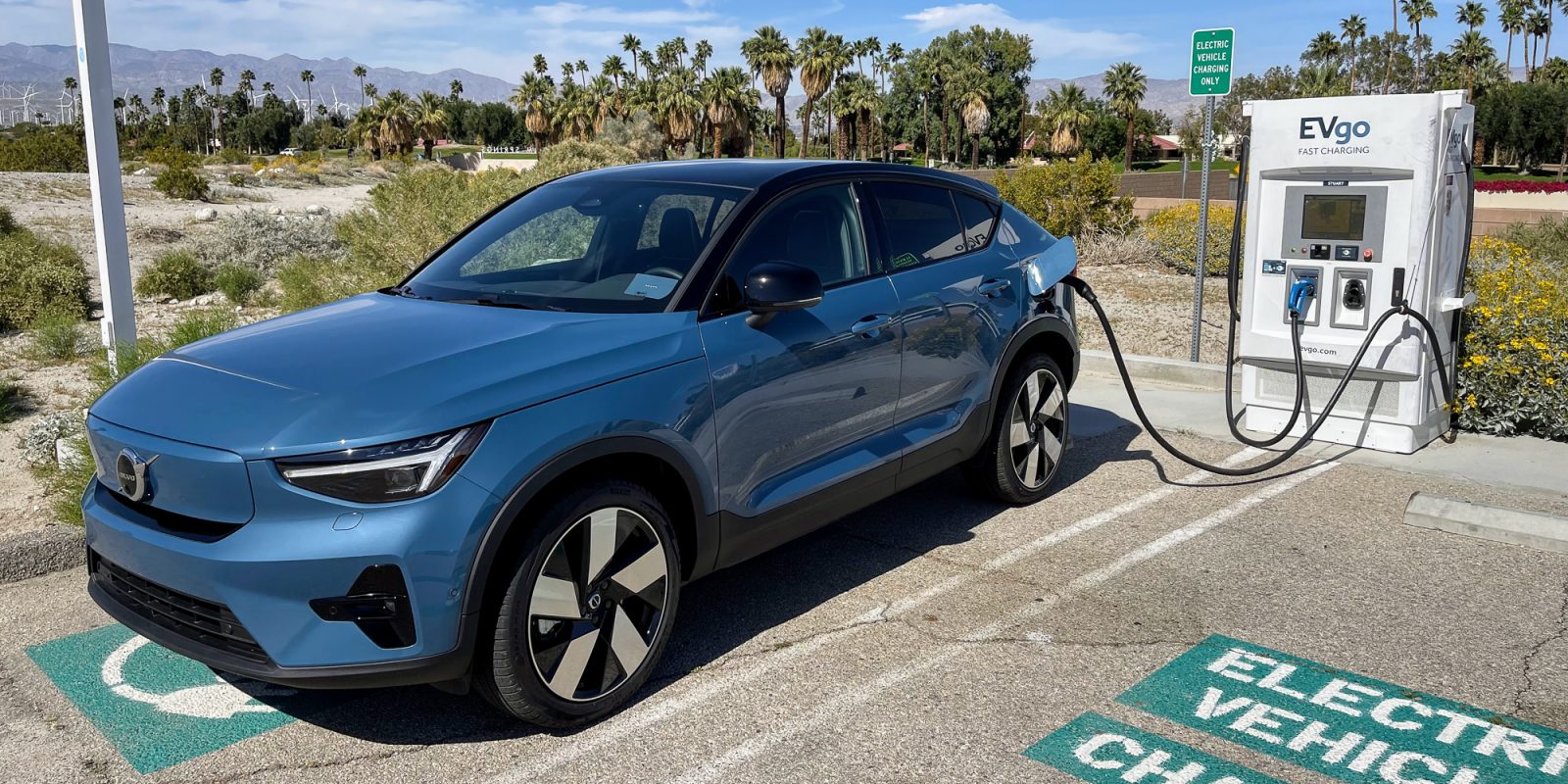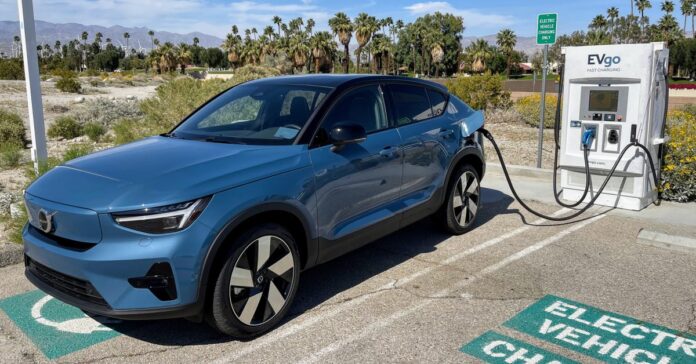[ad_1]

We’ve all read so-called “range anxiety” stories — and most EV owners know they amount to a hill of beans when it comes to the lived experience of electric cars. And yet, there seems to be a narrative in mainstream media that range anxiety is the key issue when it comes to EV adoption, one that they’re rather keen on pushing whenever the opportunity arises.
The New York Times published an article this week in which one of its climate reporters — one who claims to have had experience driving and charging Teslas in the past — describes an incident that ended with his depleted rental Volvo C40 Recharge being towed away by Hertz in rural Minnesota.
The blame, according to that Times reporter, lies at the feet of Hertz for not informing him of the few charging stations where he was headed (how would they know?), the C40 Recharge’s “slow” recharge speed (it supports 149kW DC), and the general state of US charging infrastructure (read: the one charger he found was too slow).
The reporter also briefly blames himself for choosing an EV for a trip into rural farming country without checking on the availability of charging stations, but this seems rather beside the overall story he’s attempting to drive home here: EVs and EV infrastructure aren’t “ready” for regular Americans. From the article:
But for now, if electric vehicles can’t get me from Minneapolis to the South Dakota border and back, they’re almost certainly not ready for the great American road trip.
The facts of the story are as follows.
- The reporter rents a C40 Recharge from Hertz in Minneapolis.
- He says the vehicle has 200 miles of indicated range (read: it probably wasn’t fully charged — the C40 offers 226 miles of EPA range), but knows that he has planned a 308-mile round-trip journey with deadlines.
- He finds a single (6kW) charger while en route and stops to use it, but it’s Very Slow (“2%” added in 30 minutes).
- He decides to go on anyway, hoping there will be more charging stations ahead (he does not appear to research this at all). There aren’t any.
- He arrives at a farm near the South Dakota border with 20% charge remaining (45 miles) and charges the car on an AC wall outlet for 15 hours, adding 20 miles of range (so, 65 miles, presumably — this will become important later).
- He decided that because there are no chargers within 50 miles of the farm, he has to call Hertz and have them tow the car, which they do, and he gets a ride with a friend back to Minneapolis.
- Hertz charges him a $700 tow fee, and he works with Hertz PR to get this refunded because he believes the fee is unjust.
A few things come to mind.
First, I can’t even begin to understand how any of this is Hertz’s problem. This person used a rental vehicle in a way that was likely to leave it stranded and is blaming the rental company for this? Is this any different than renting a Ford Mustang and then blaming Hertz when it gets stuck on a washed-out dirt road in the backcountry? Did he even tell Hertz what his route was? Did he truly expect them to say something like, “Hey, this is probably going to mean planning your charging carefully”? His justification here is borderline ridiculous.
But Hertz deserves some blame too. The company rented me a car that was slow to charge, and did nothing to warn me about the dearth of charging stations outside of Minneapolis. Surprising me with a huge fee poured salt on the wound.
Second, his assertion that this was a “slow charging” car. Now, this is just flatly wrong — the C40 Recharge supports 149kW DC fast charging. While you’ll be lucky to find something like that out in the Minnesota sticks (barring Tesla Superchargers), a 50kW charger plugged in for an hour would likely have avoided this whole debacle.
Third, the whole chain of events here is a comedy of errors. I bothered to actually do some Google Maps sleuthing, and everything about this outcome was utterly avoidable. The reporter claims that a 6kW Blink charger was the “only” option on his way back to Minneapolis, but that was only after he’d passed a 50kW ChargePoint about 60 miles into his journey, presumably with around 140 miles of indicated range remaining on the C40. Had he stopped there and charged near to full, he’d have been able to hit the same station on the way back for a brief second charge before returning the car the next day.

All this is to say: The person who ended up in this situation was a victim of their own ignorance. Nothing more, nothing less. In choosing to use a vehicle with an understood set of capabilities and limitations, he chose not to inform himself and instead ended up in a debacle whose summary analysis should have started and ended at “well, that was stupid of me.”
As icing on the cake, his claim about the car being unable to reach another charging station after adding 20 miles of range at the farmhouse overnight seems dubious. A ZEF 50kW station in Marshall, Minnesota, is at most 65 miles from wherever this person was headed, and likely a bit closer (I picked a town that would have actually made for a round trip longer than the 308 miles the reporter claimed).

The article says that the car showed no chargers “within 50 miles” of the farm, so presumably that means anything beyond that radius just… didn’t exist?
I get it: When traveling for work, considering the peculiarities and planning necessary for your means of conveyance is probably not the first thing on your mind. But when you’re taking a 300-plus-mile road trip in rural Minnesota in an electric car, you should probably be thinking about this stuff.
And as for Hertz refunding that $700 tow fee, while I’m not going to say I love anything about Hertz as a company, it sure seems like they did it to avoid the ire of The New York Times more than any belief this person had a valid grievance.
EVs aren’t complicated. This person’s trip was entirely feasible — with five minutes of planning. They chose not to put in that five minutes and ended up stranded. I don’t think electric cars or their infrastructure are to blame.
FTC: We use income earning auto affiliate links. More.
[ad_2]
Source link











